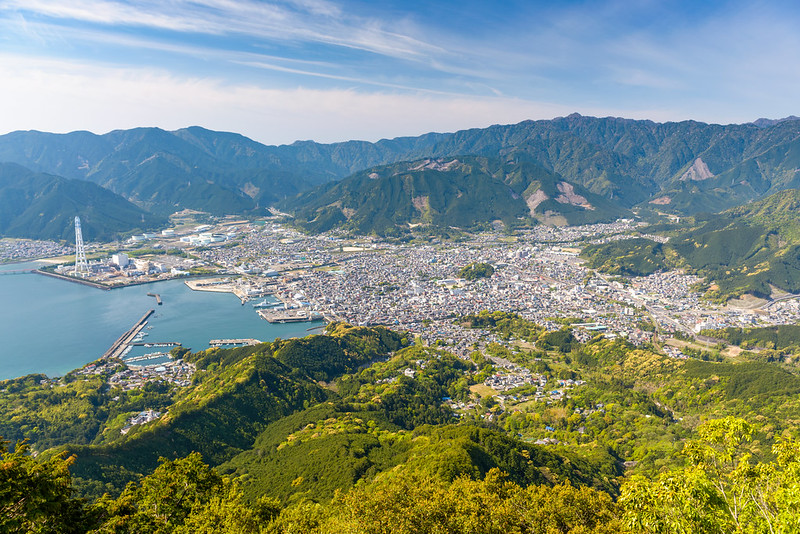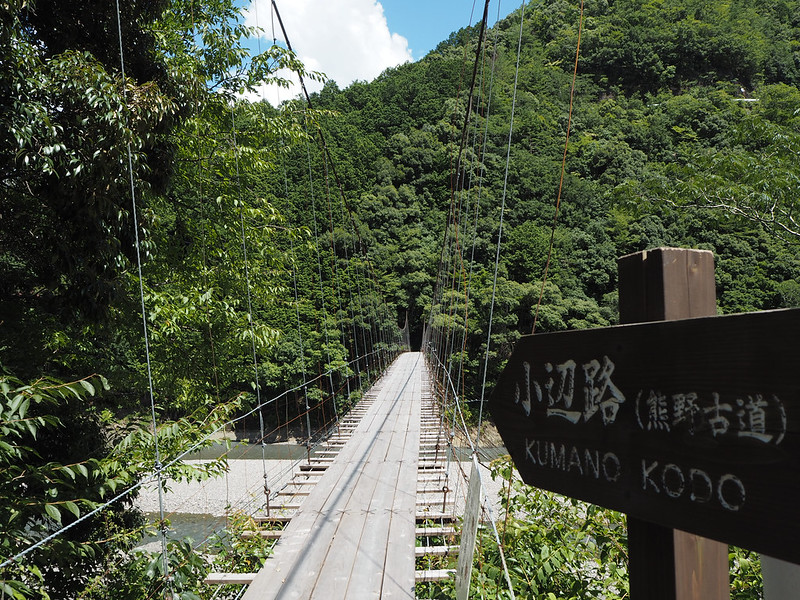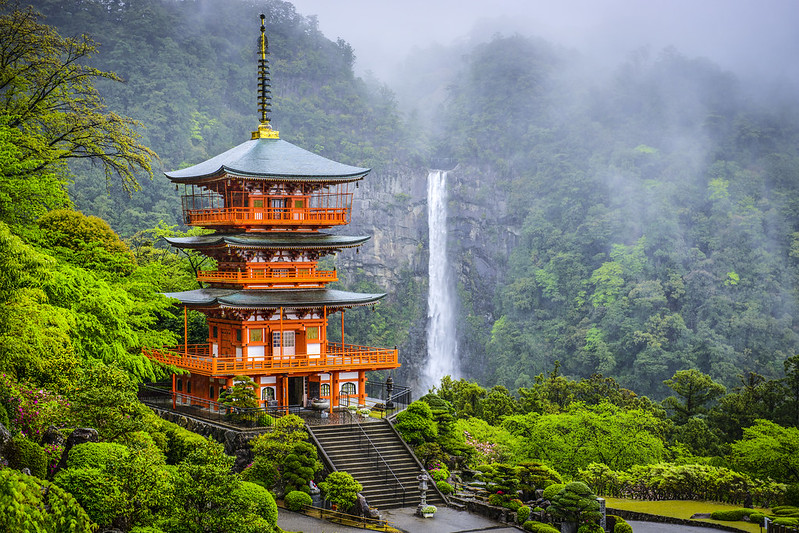
A Glimpse of Gorgeous Kii Peninsula
The Kii Peninsula (紀伊半島 Kii Hantō), the largest in the island of Honshū, is rich with temperate rainforest due to wet lowlands and several coastal inlets fed by steep streams. Its Kumano region (熊野地方 Kumano chihō) is known to have one of the highest, most beautiful waterfalls in Japan and is home to the Kumano shrines (熊野神社 Kumano Jinja).
Pilgrimage route to Kumano Sanzan
Kumano Shrines
A Kumano shrine (熊野神社) is a Shinto shrine that reveres the Hongū, Shingū, and Nachi mountains. Although 3,000 are scattered all over Japan, three head shrines (Sōhonsha) are known as the Kumano Sanzan. These are 20 to 40 kilometers apart from each other and are connected through a pilgrimage route called Kumano Sankeimichi (熊野参詣道). The Kumano region is known to predate all of the modern religions in Japan. The area holds significant religious meaning and is also known for physical healing. The Kumano shrines are a fusion of Japanese Shinto, Chinese Taoism, and Buddhism. They are closely tied to the Buddhas Amida Nyorai, Yakushi Nyorai, and Senju Kannon.
Seiganto-ji Pagoda and Nachi Falls
Nachi Falls
A captivating site in the Kumano region is Nachi Falls (那智滝 Nachi no Taki), with a magnificent 133-meter drop. Nachi Falls is said to be the home of a spirit named Hiryū Gongen who is worshiped at Kumano Nachi Taisha, one of the Kumano Sanzan.
In the middle ages, the pilgrimage to the sacred lands of Kumano was observed by the Japanese aristocracy as well as by commoners, all leading to the Kumano Sanzan. Even today, many people who practice Shugendo travel deep into the mountains of Kumano to endure training practices to be reborn.


